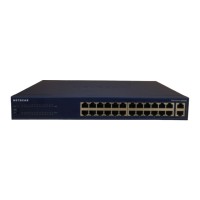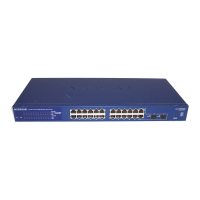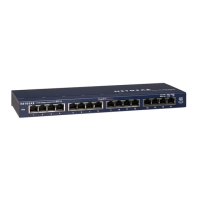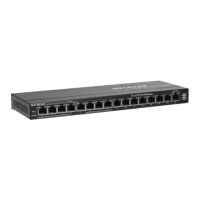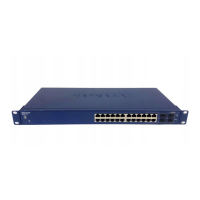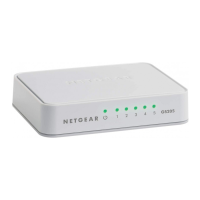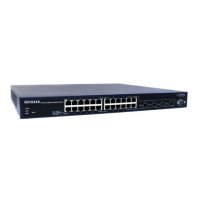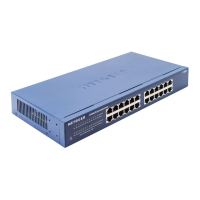Configuring Quality of Service
229
S3300 Smart Managed Pro Switch
Differentiated Services
The QoS feature contains Differentiated Services (DiffServ) support that allows traffic to be
classified into streams and given certain QoS treatment in accordance with defined per-hop
behaviors.
Standard IP-based networks are designed to provide “best effort” data delivery service. “Best
effort” service implies that the network delivers the data in a timely fashion, although there is
no guarantee that it will. During times of congestion, packets can be delayed, sent
sporadically, or dropped. For typical Internet applications, such as e-mail and file transfer, a
slight degradation in service is acceptable and in many cases unnoticeable. Conversely, any
degradation of service has undesirable effects on applications with strict timing requirements,
such as voice or multimedia.
Defining DiffServ
To use DiffServ for QoS, you must first use the links accessible from the Differentiated
Services configuration menu to define the following categories and their criteria:
1. Class: Create classes and define class criteria.
2. Policy: Create policies, associate classes with policies, and define policy statements.
3. Service: Add a policy to an inbound interface
Packets are classified and processed based on defined criteria. The classification criteria is
defined by a class. The processing is defined by a policy’s attributes. Policy attributes can be
defined on a per-class instance basis, and it is these attributes that are applied when a match
occurs. A policy can contain multiples classes. When the policy is active, the actions taken
depend on which class matches the packet.
Packet processing begins by testing the class match criteria for a packet. A policy is applied
to a packet when a class match within that policy is found.
The Differentiated Services menu contains links to the various DiffServ configuration and
display features described in the following sections:
• Diffserv Configuration on page 230
• Class Configuration on page 231
• IPv6 Class Configuration on page 234
• Policy Configuration on page 235
• Service Configuration on page 238
• Service Statistics on page 238
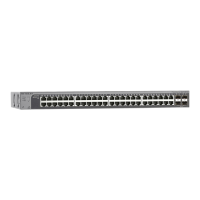
